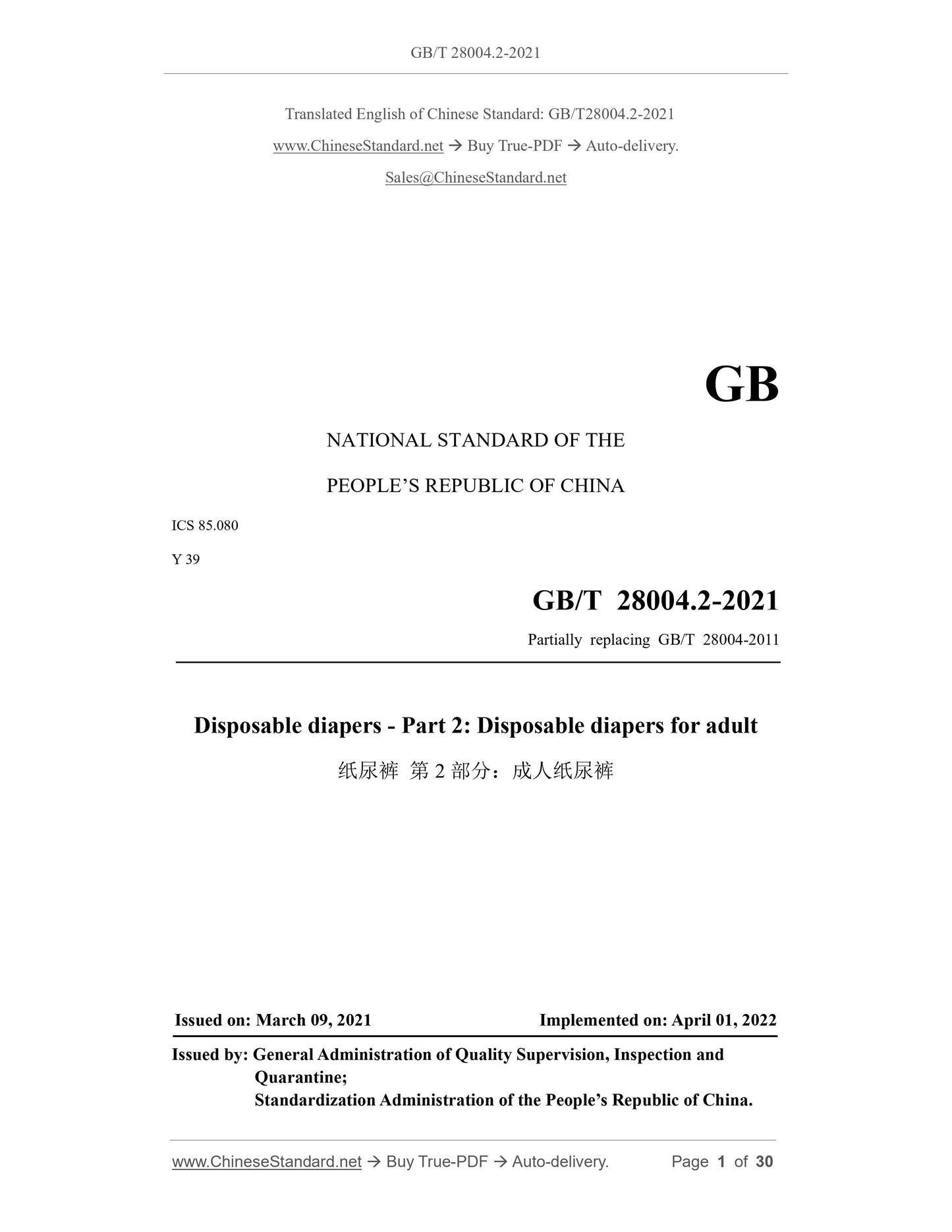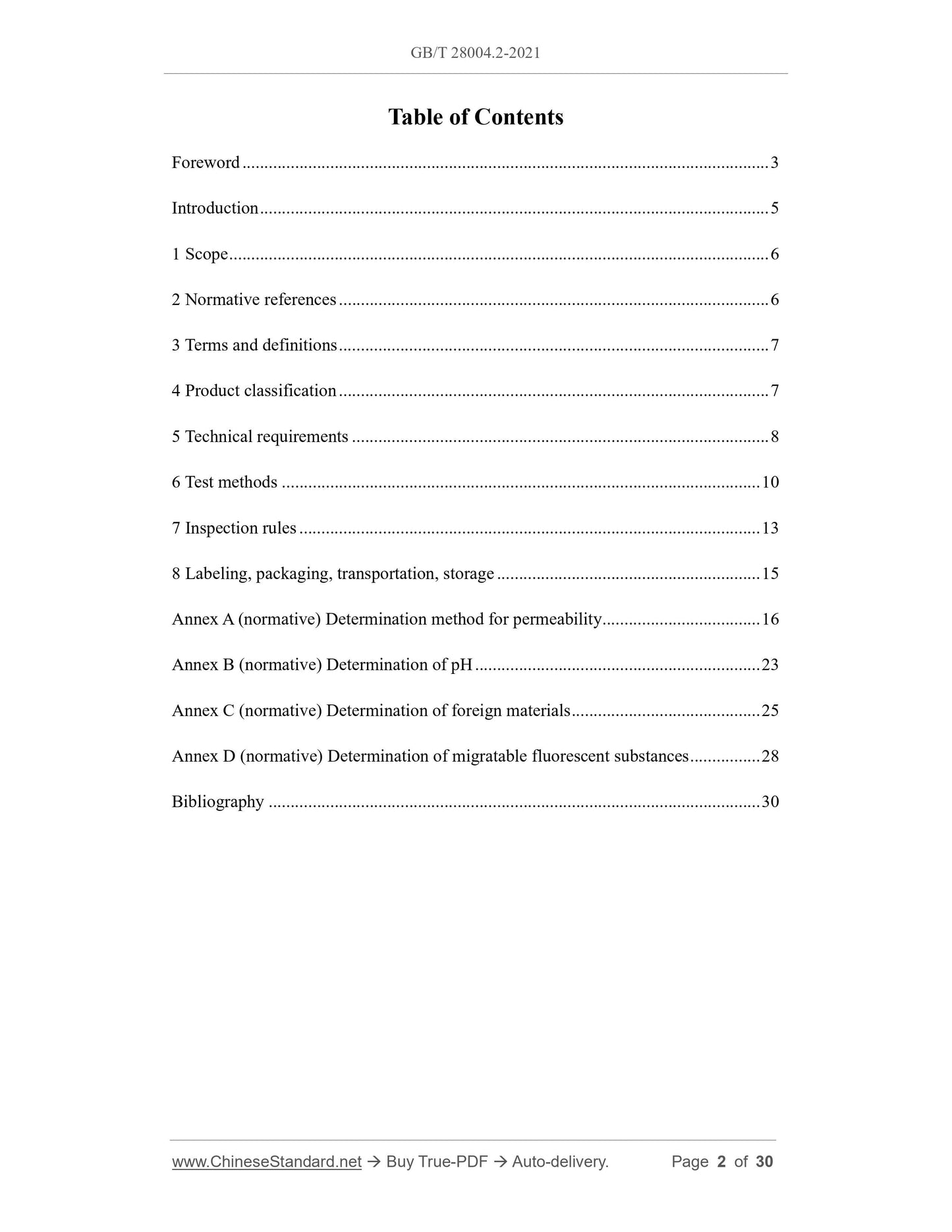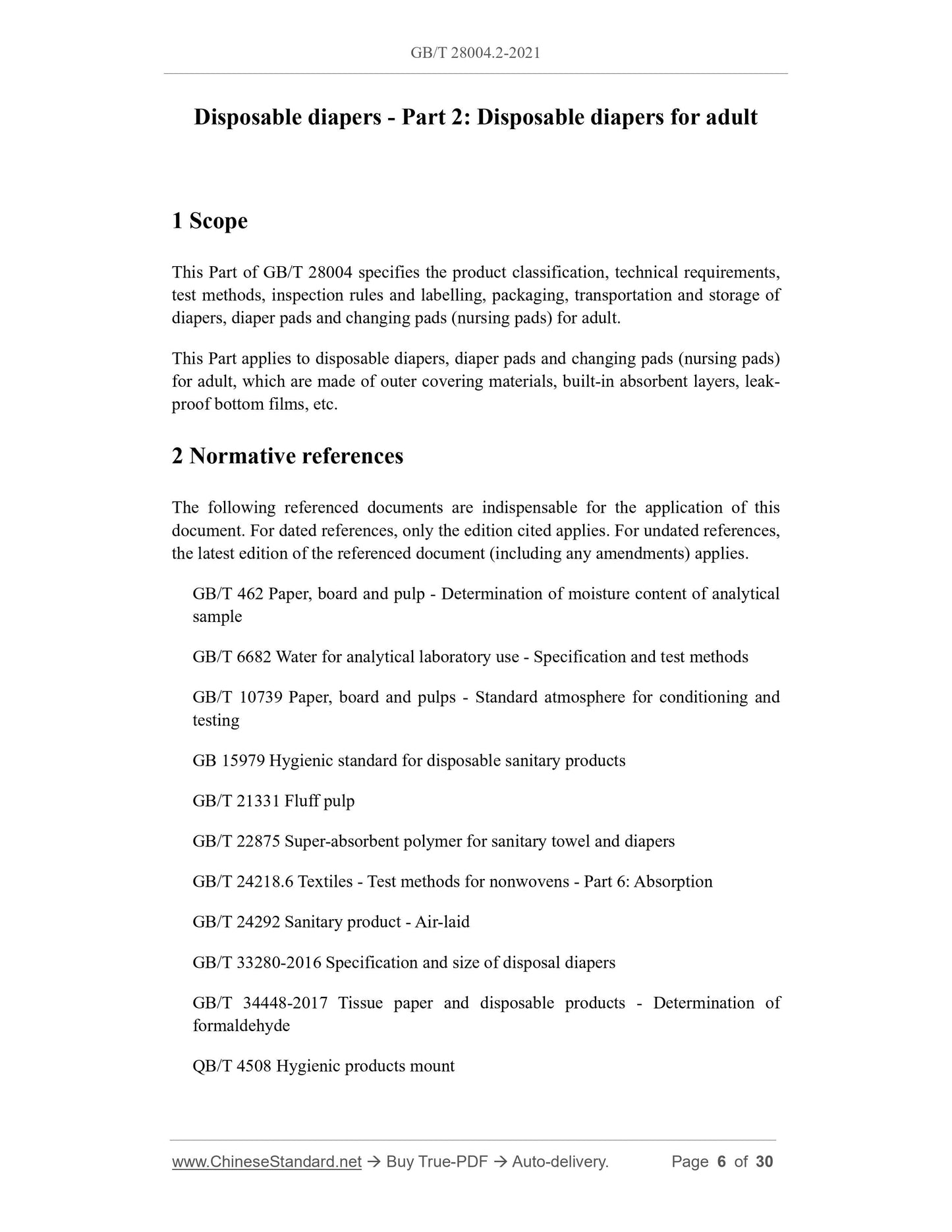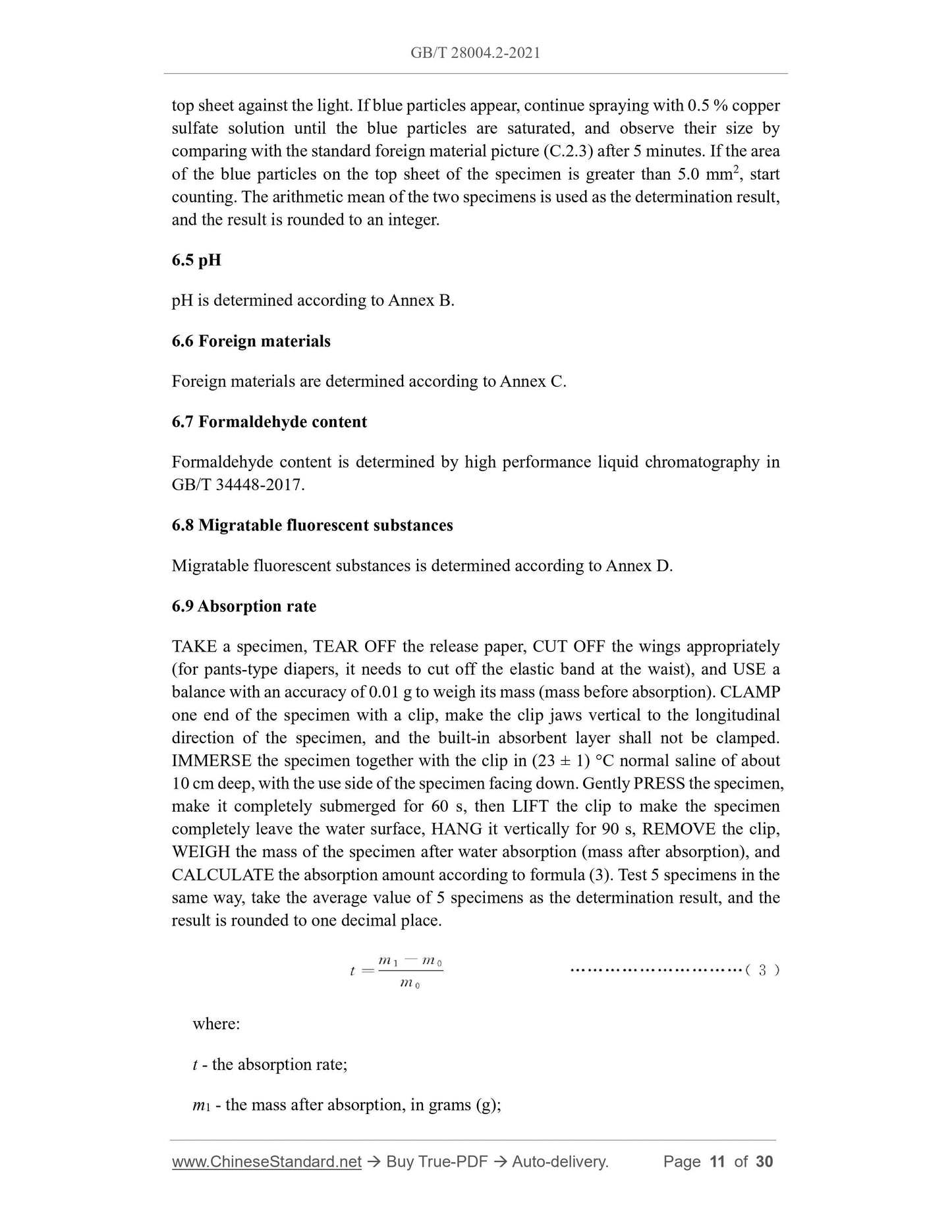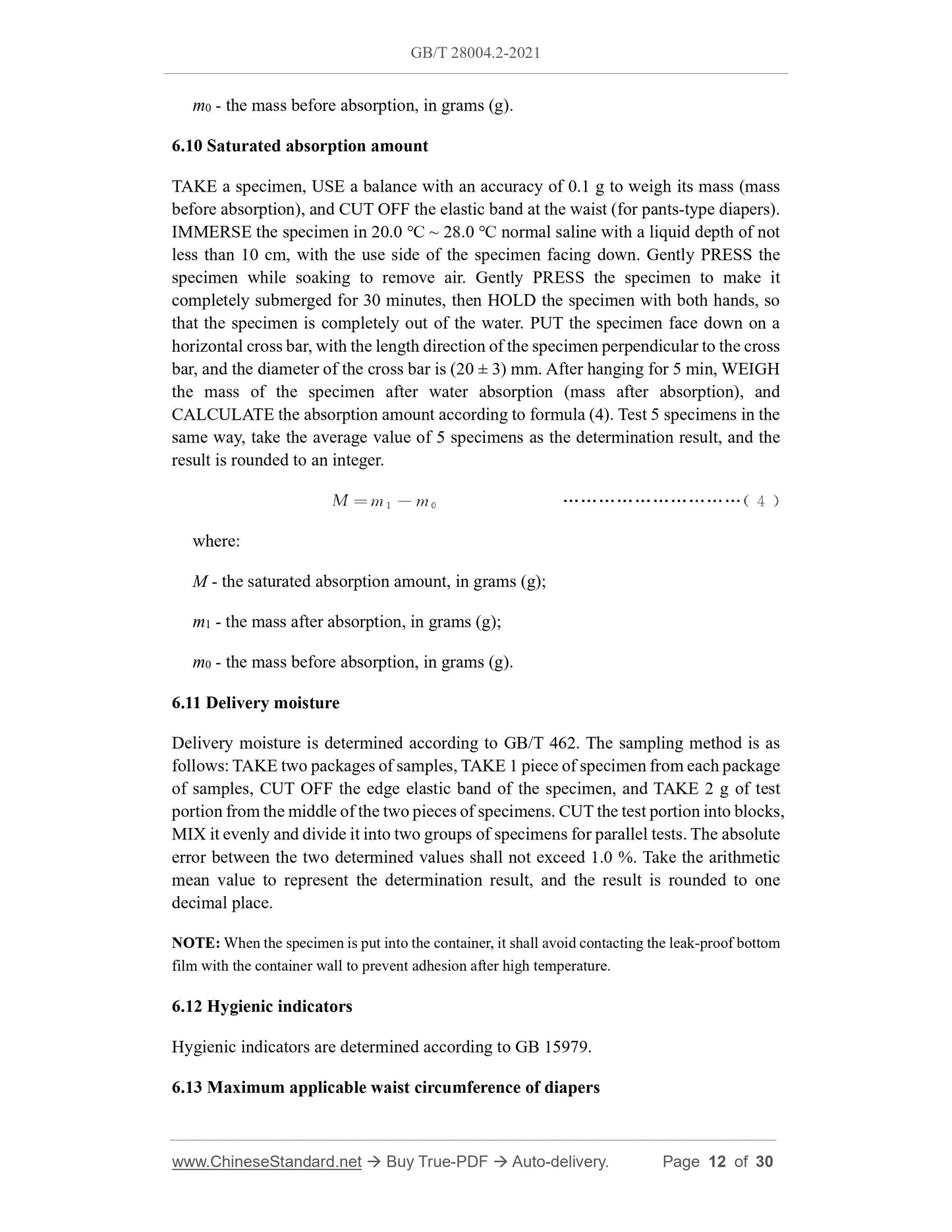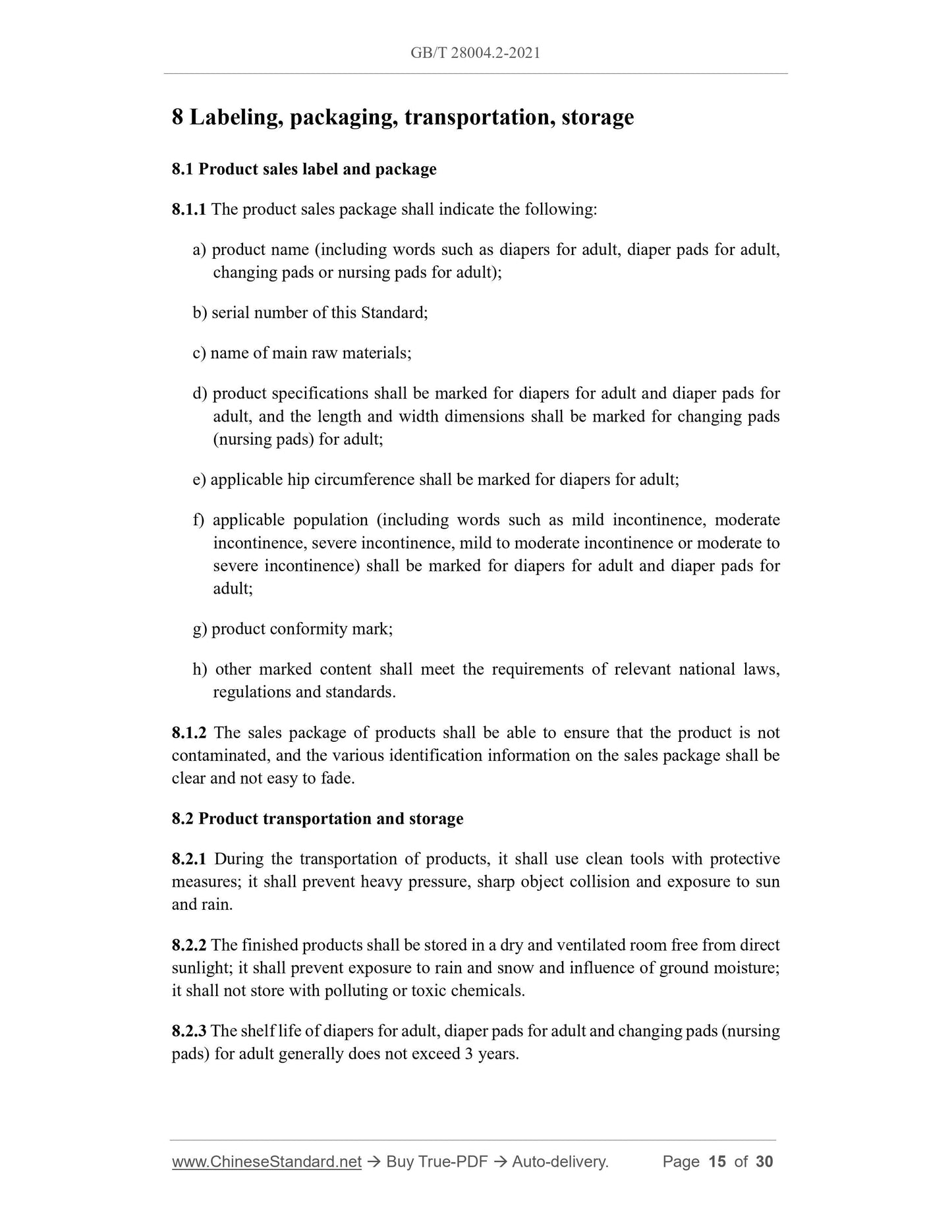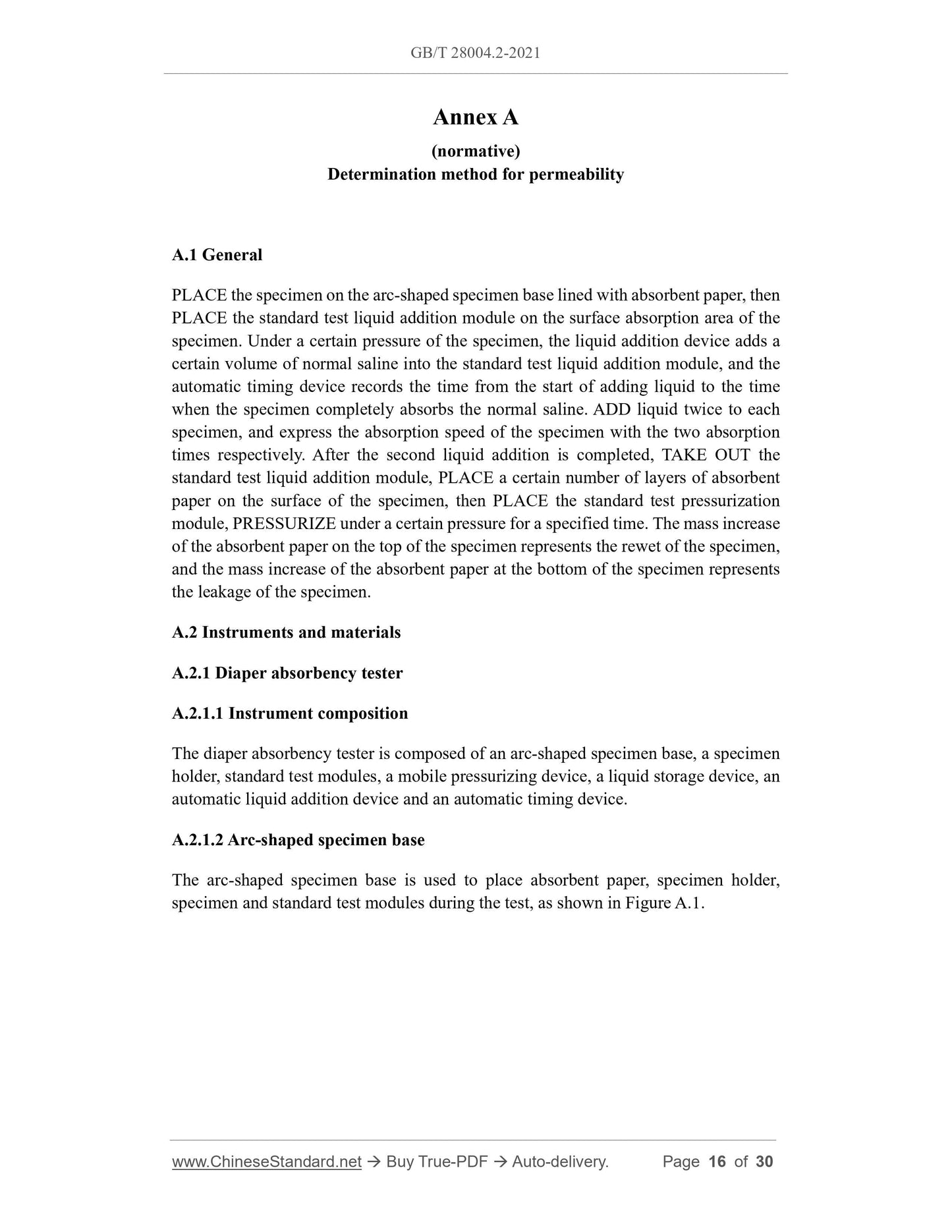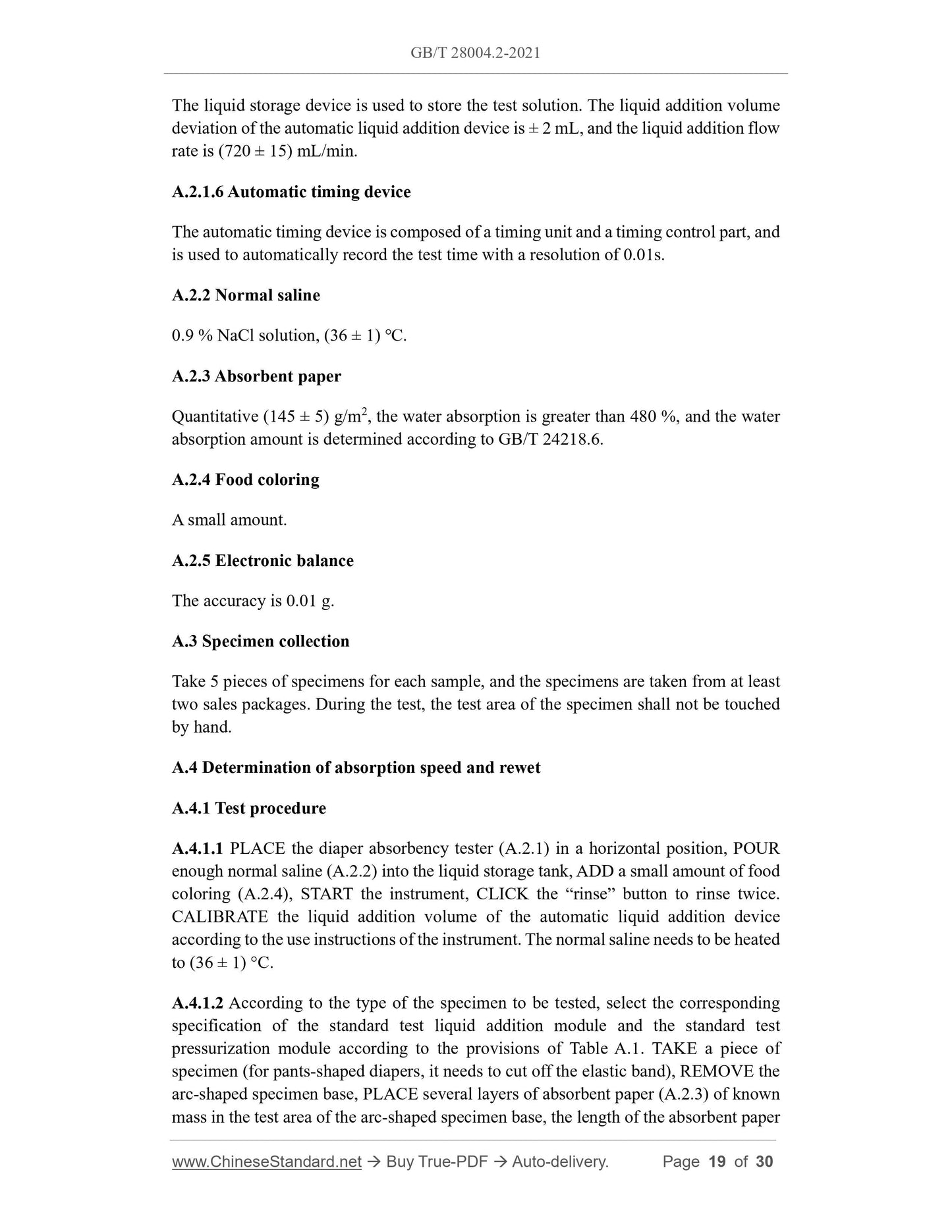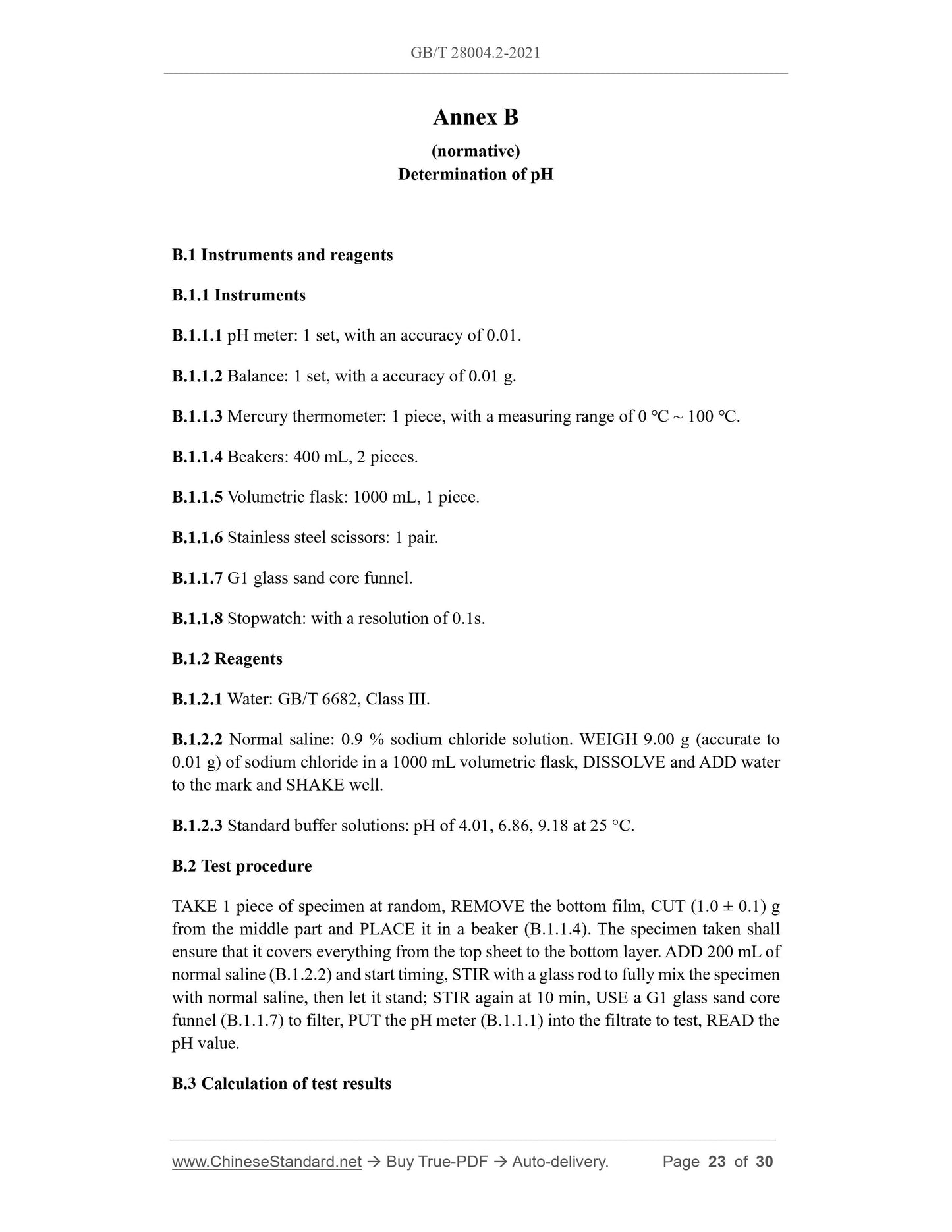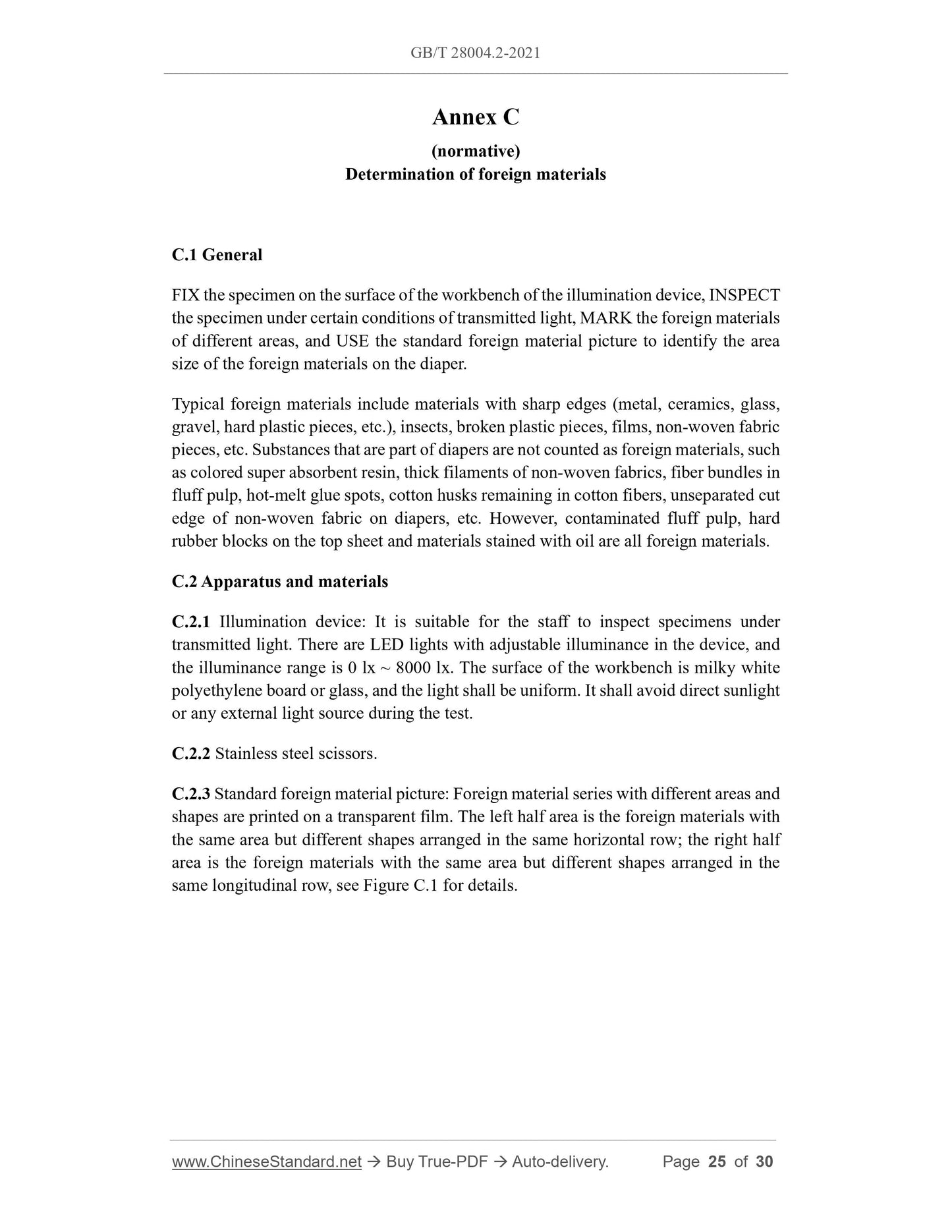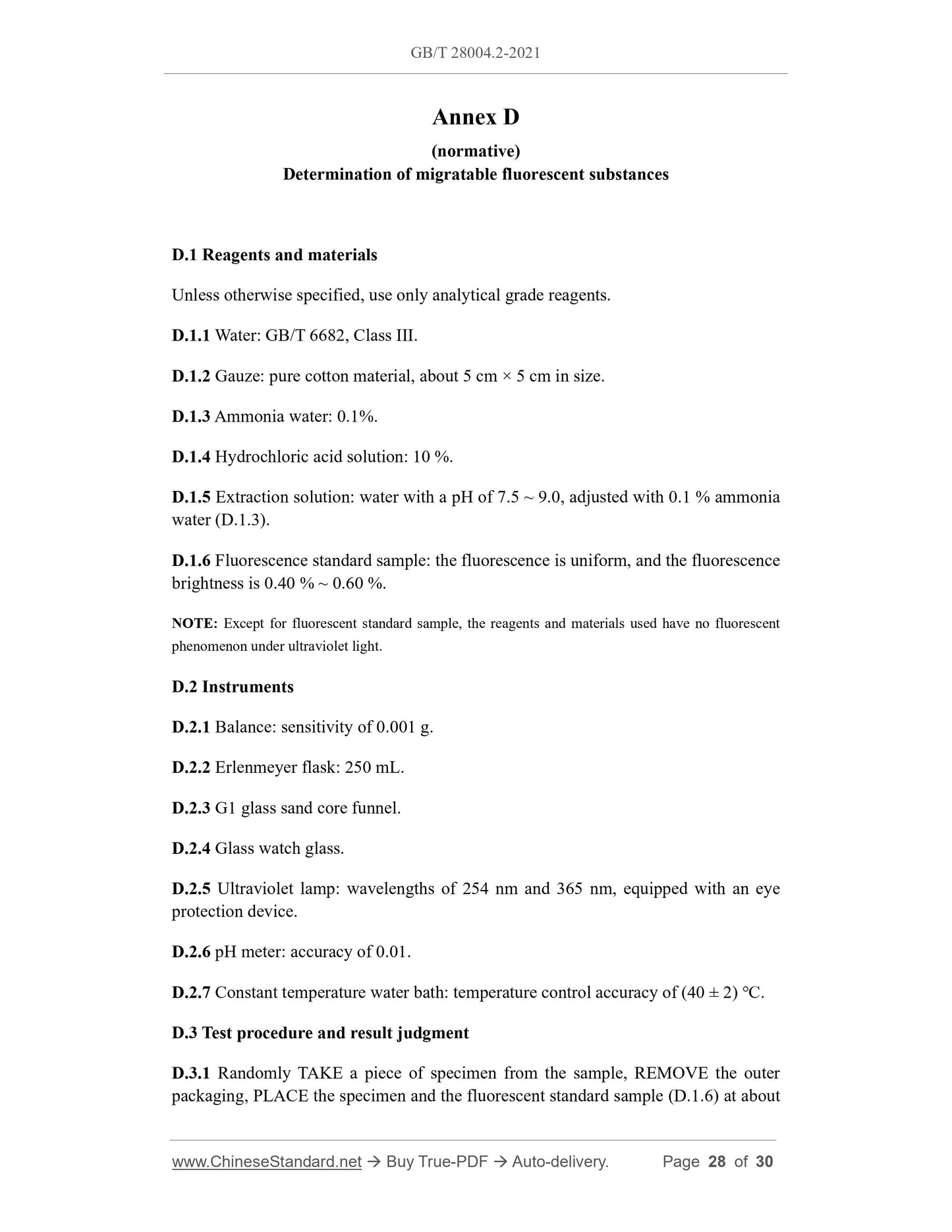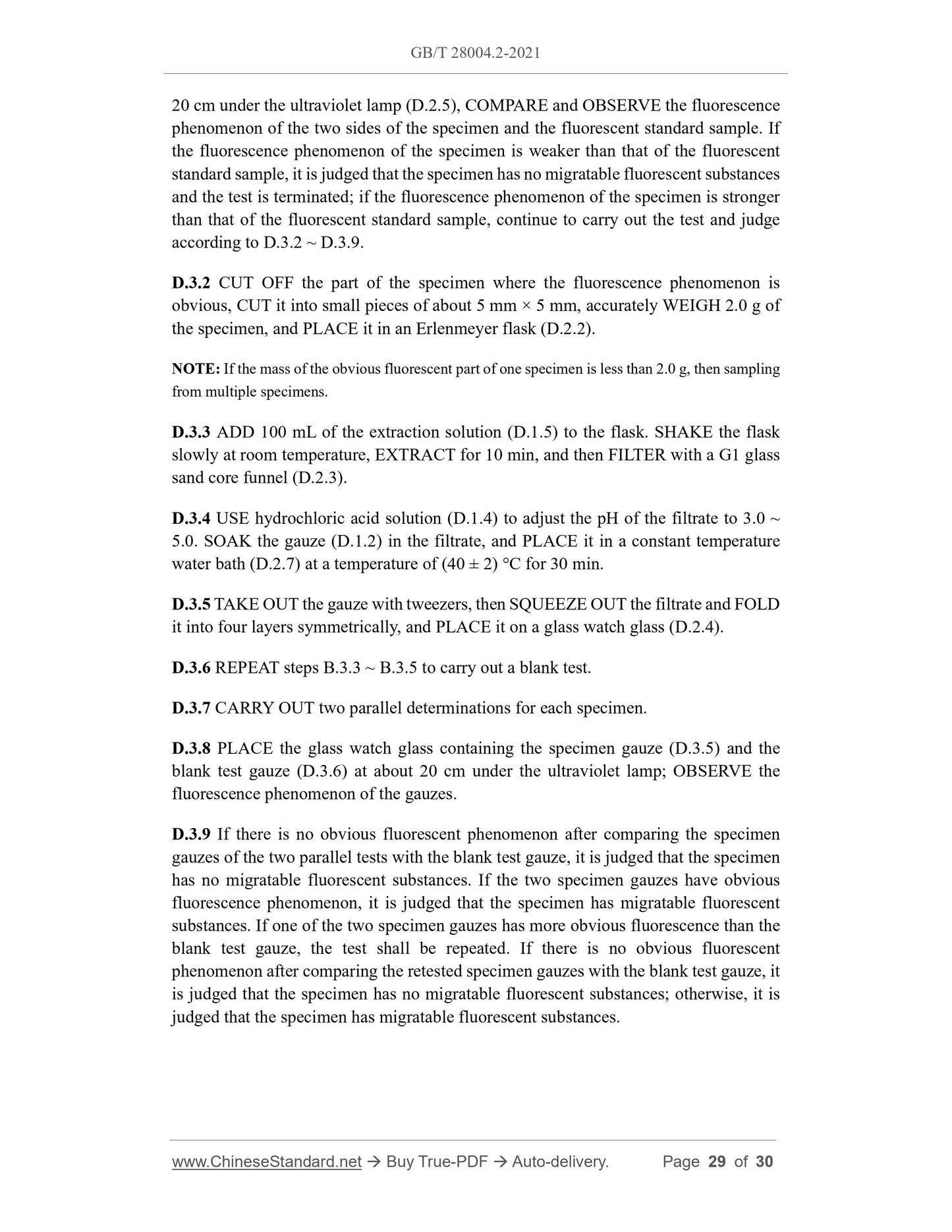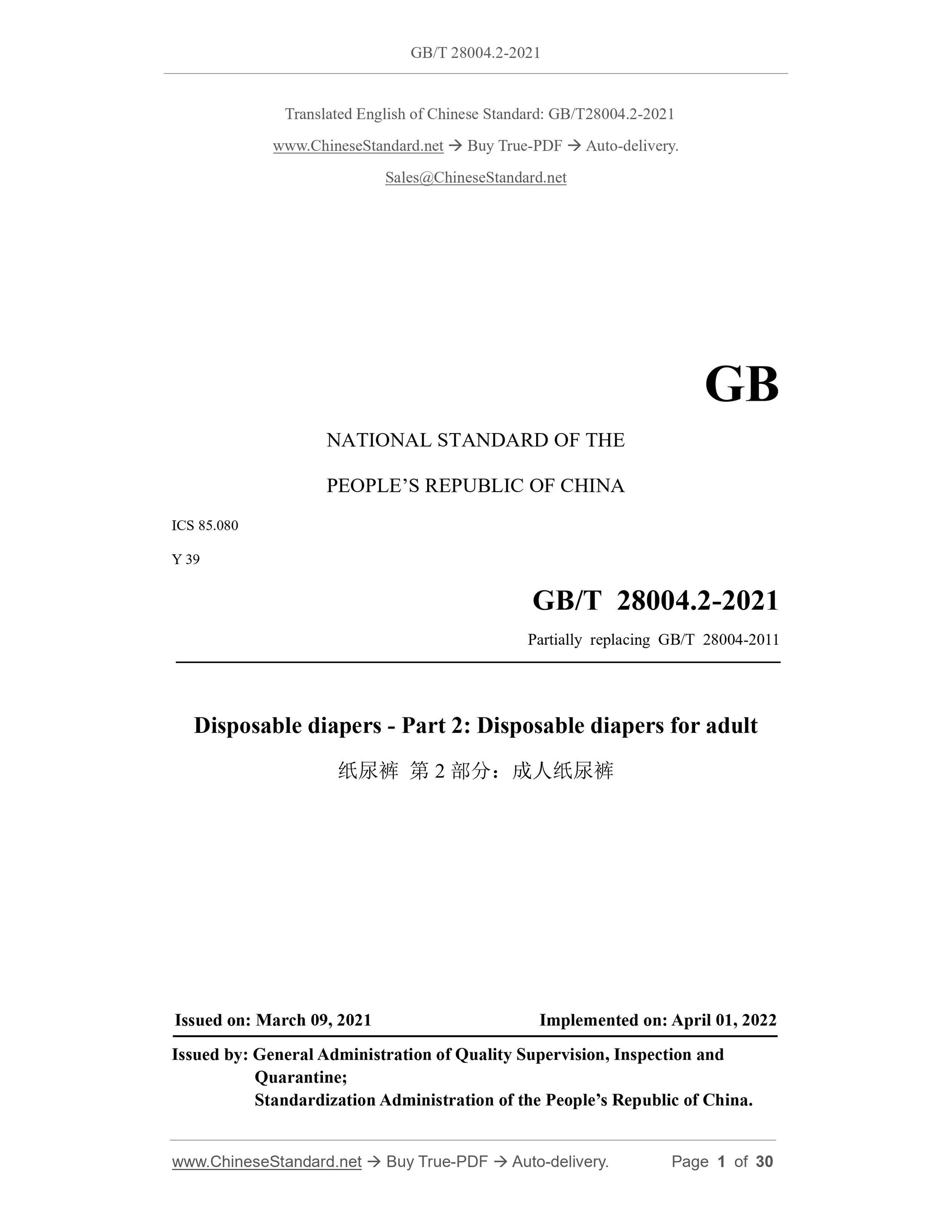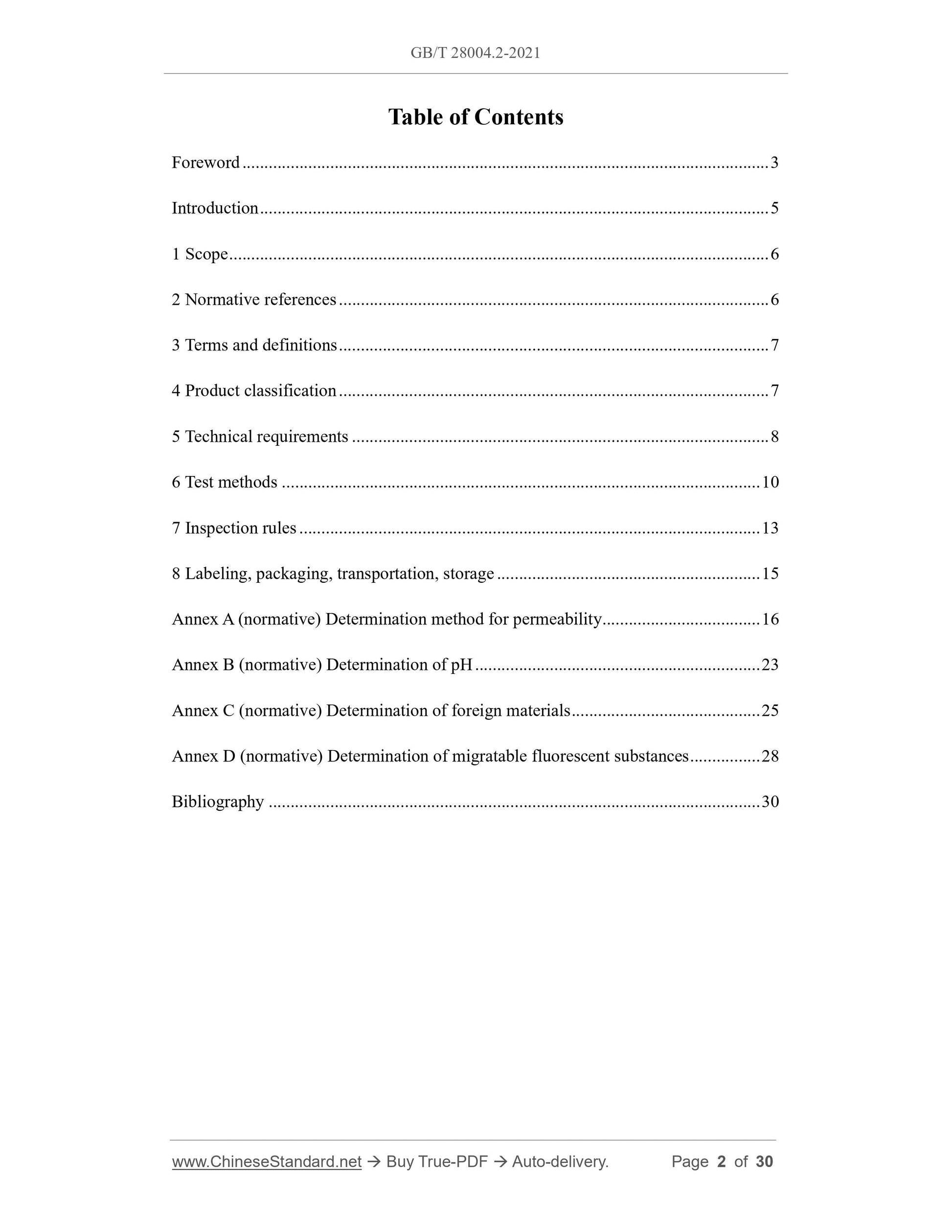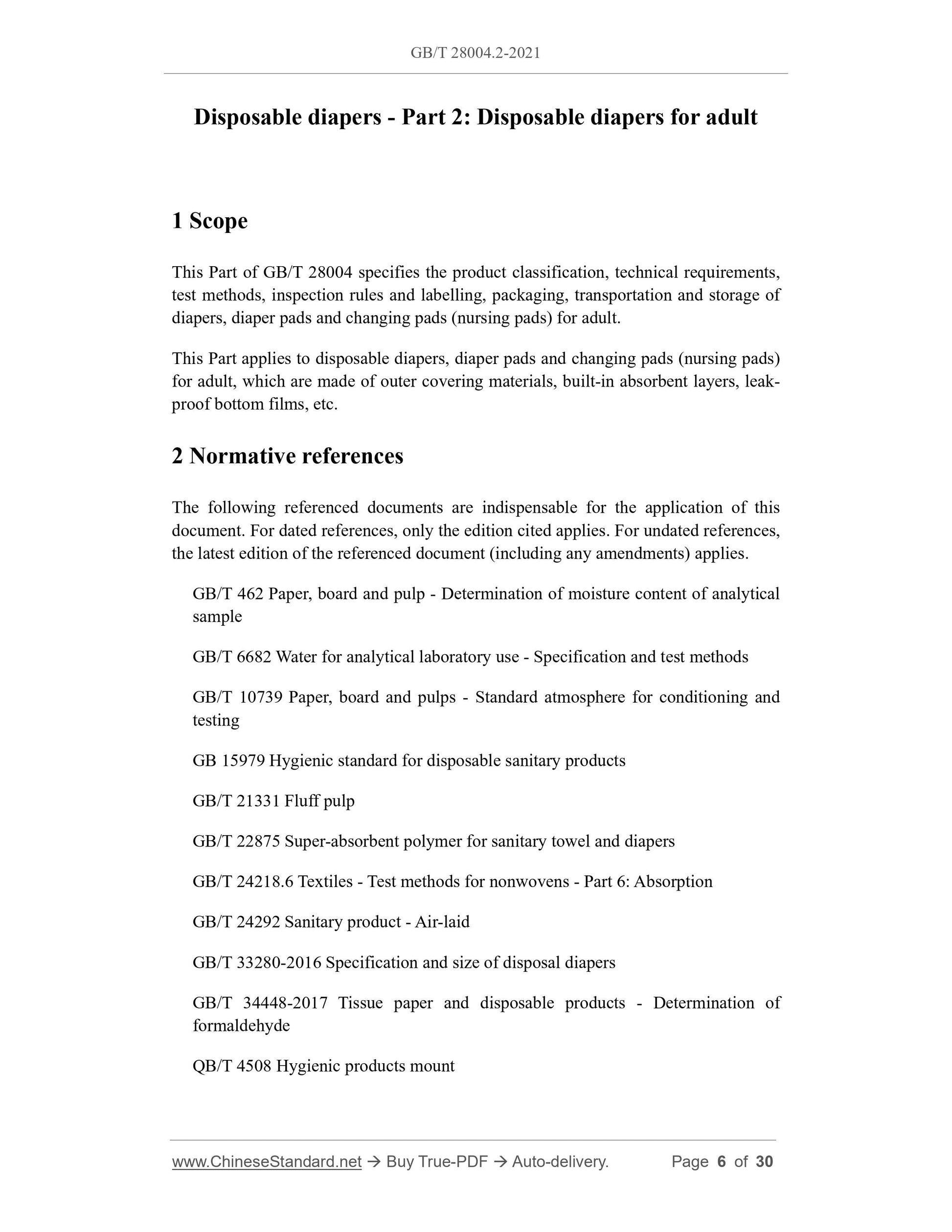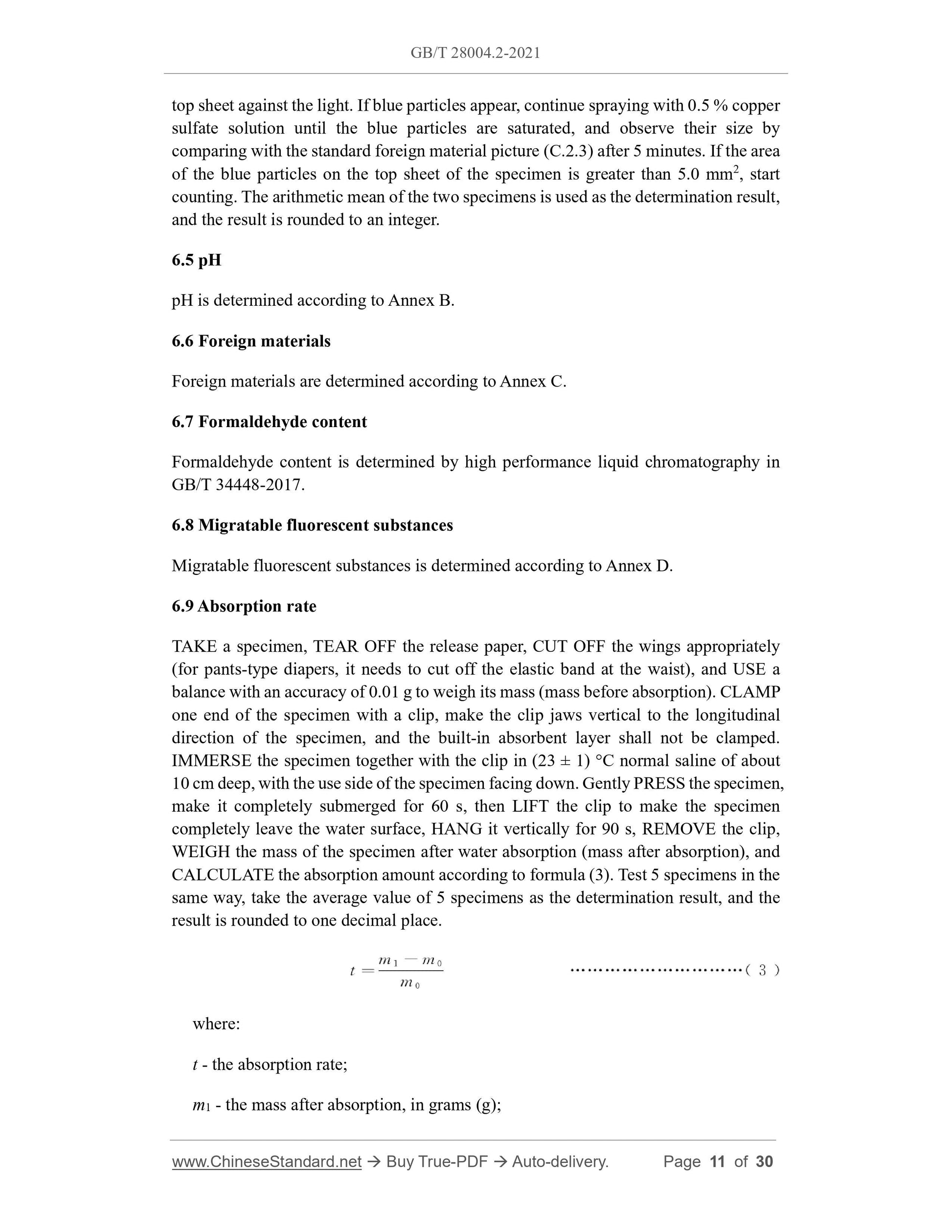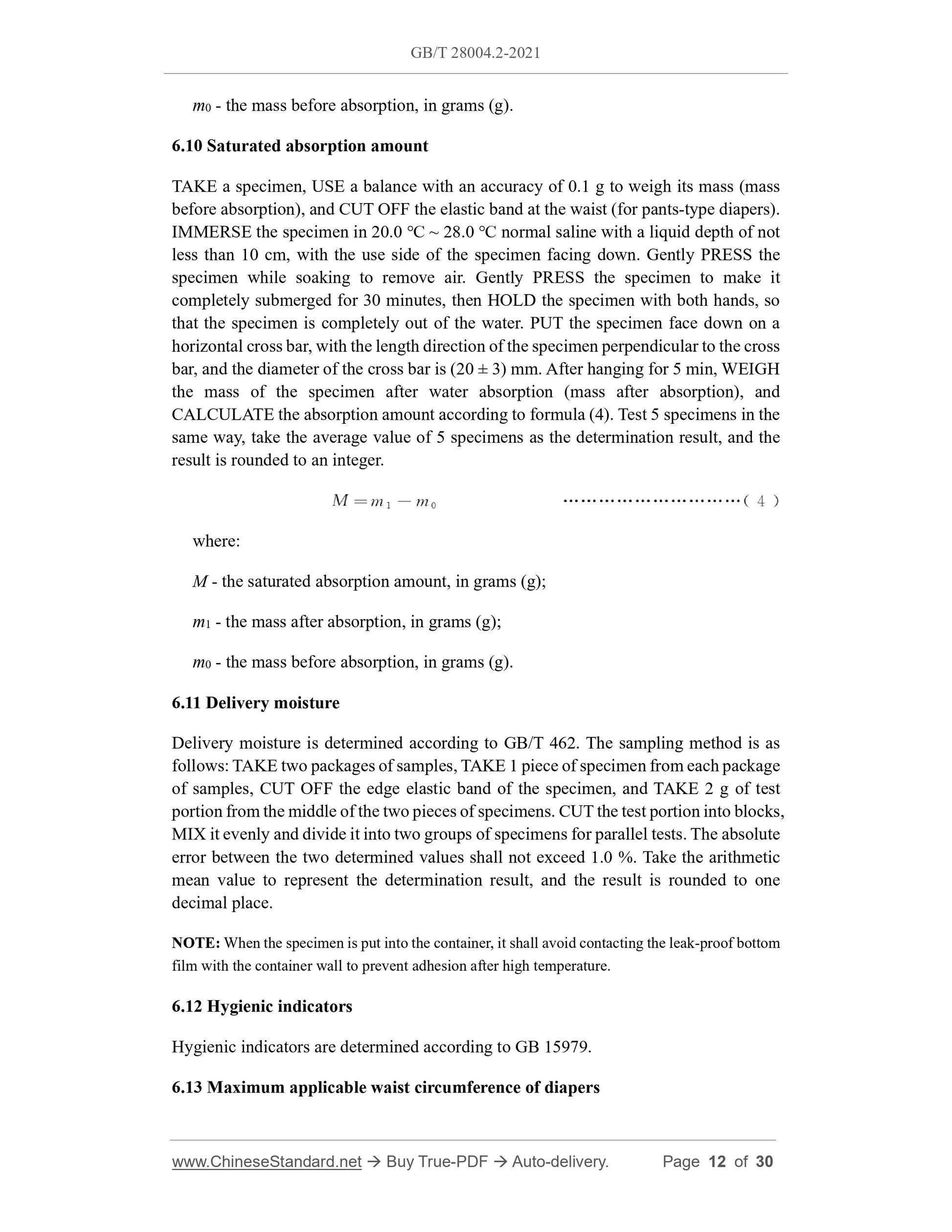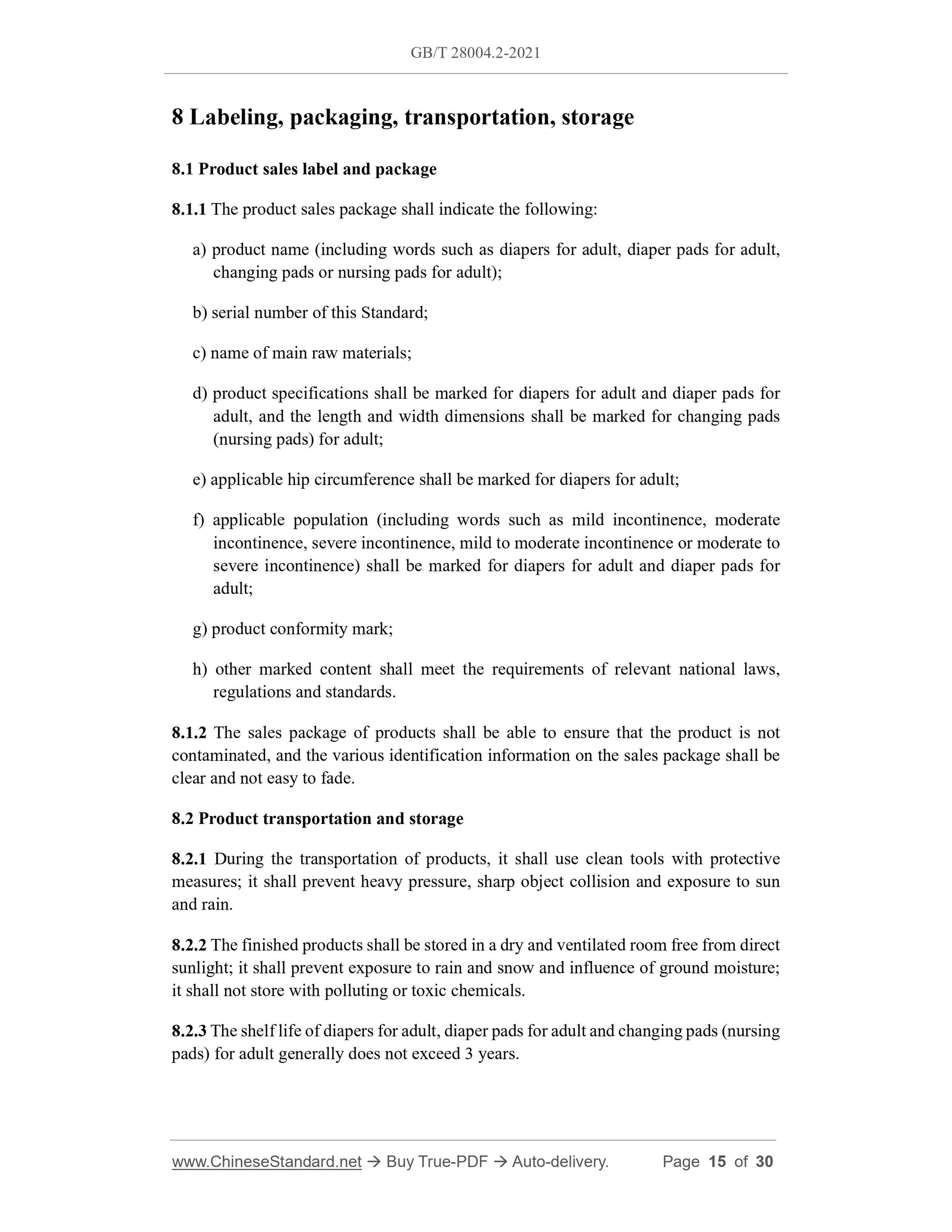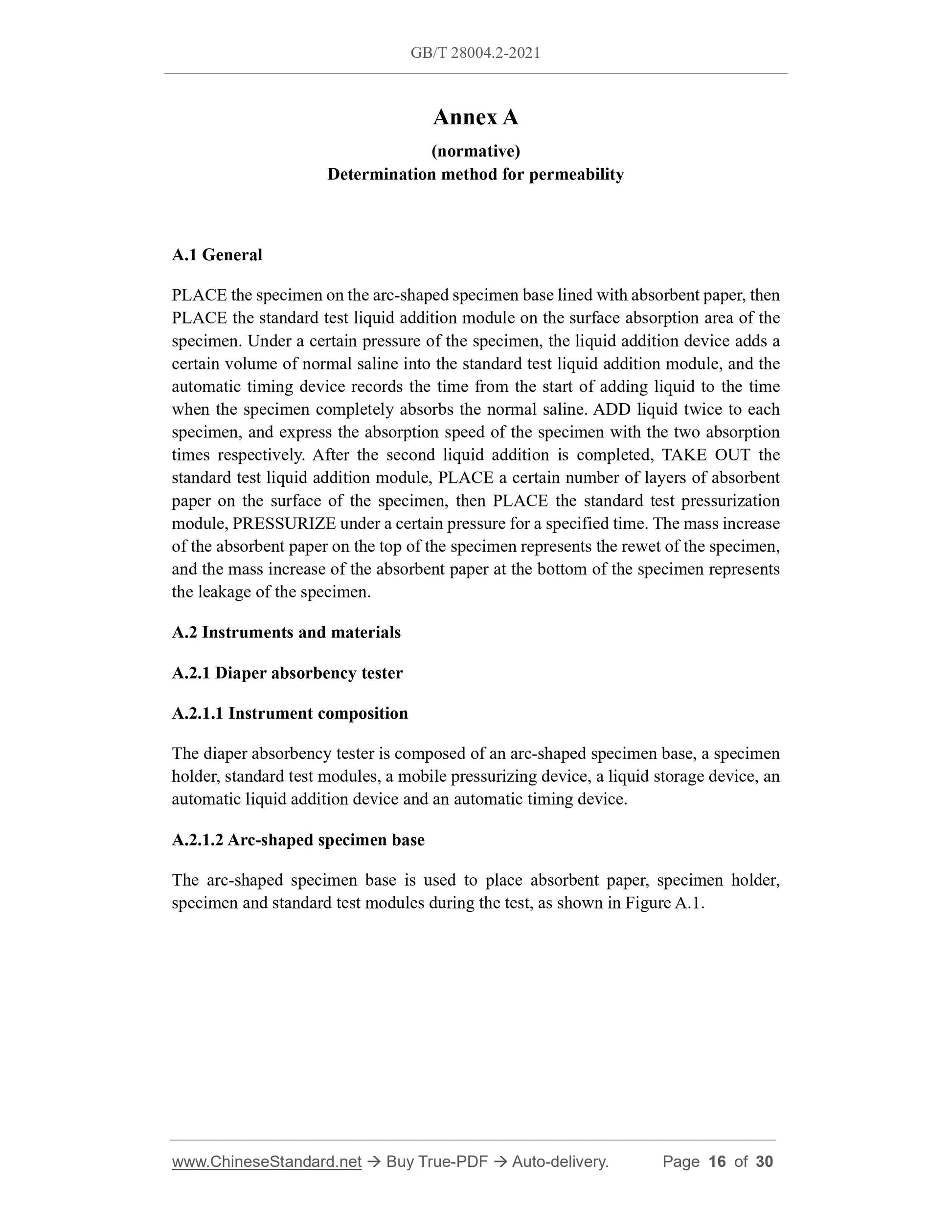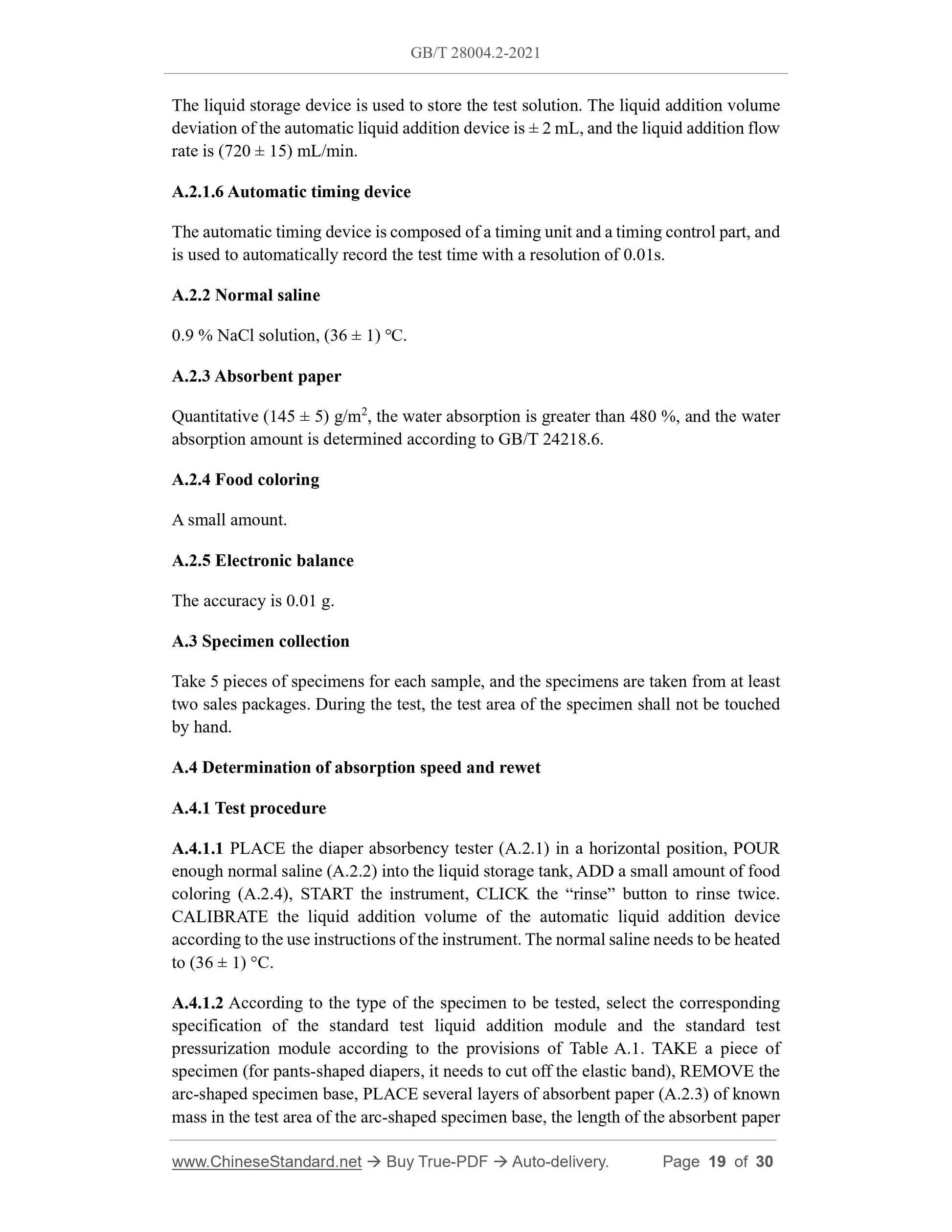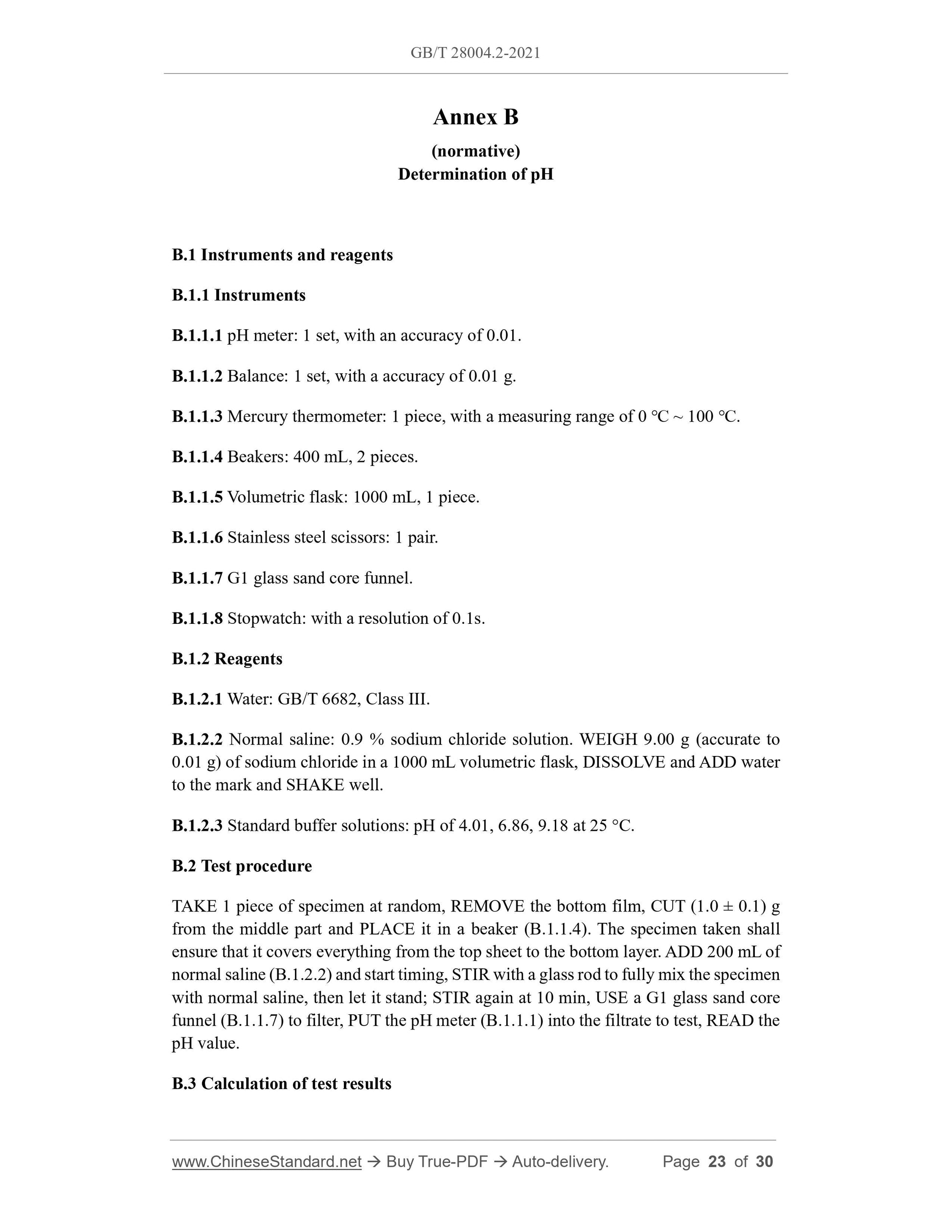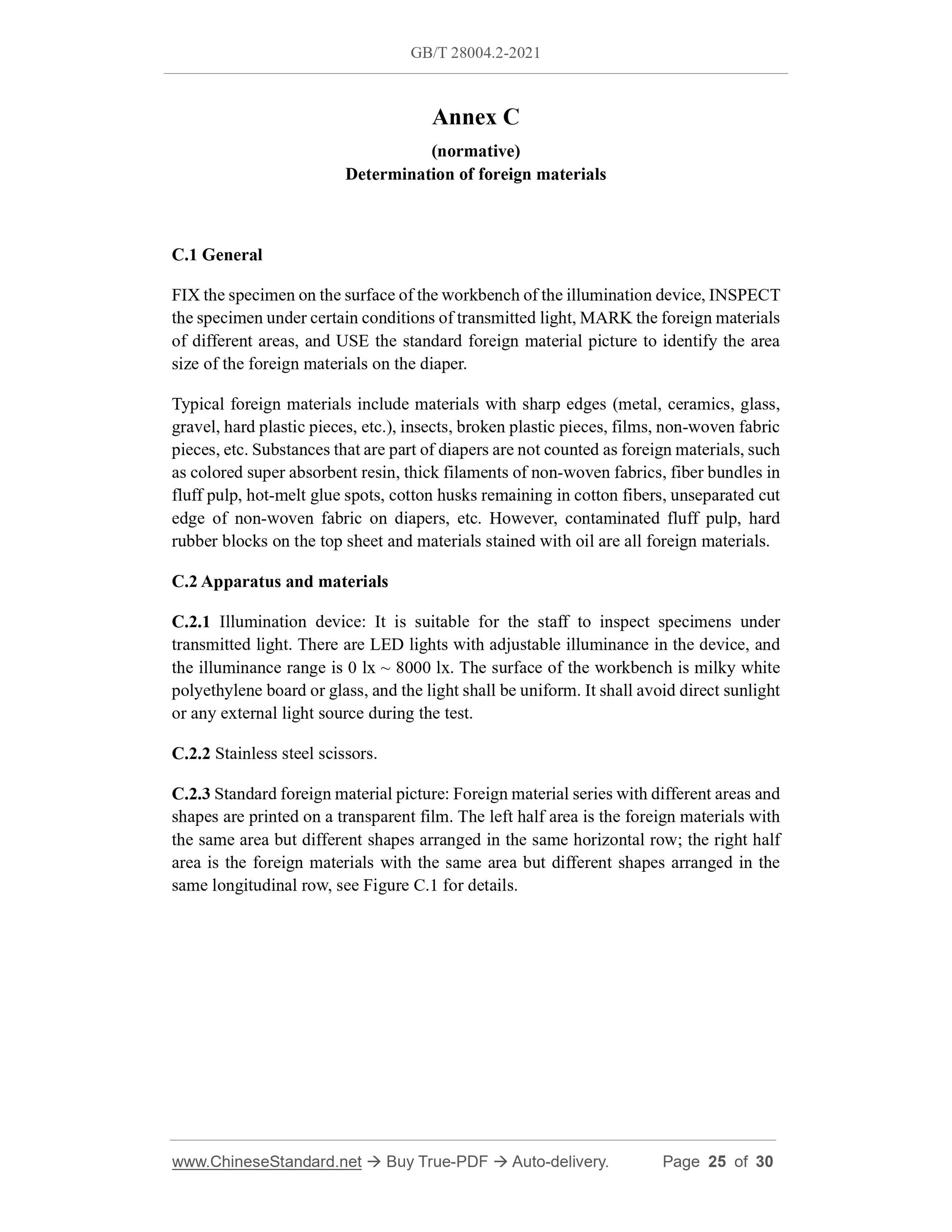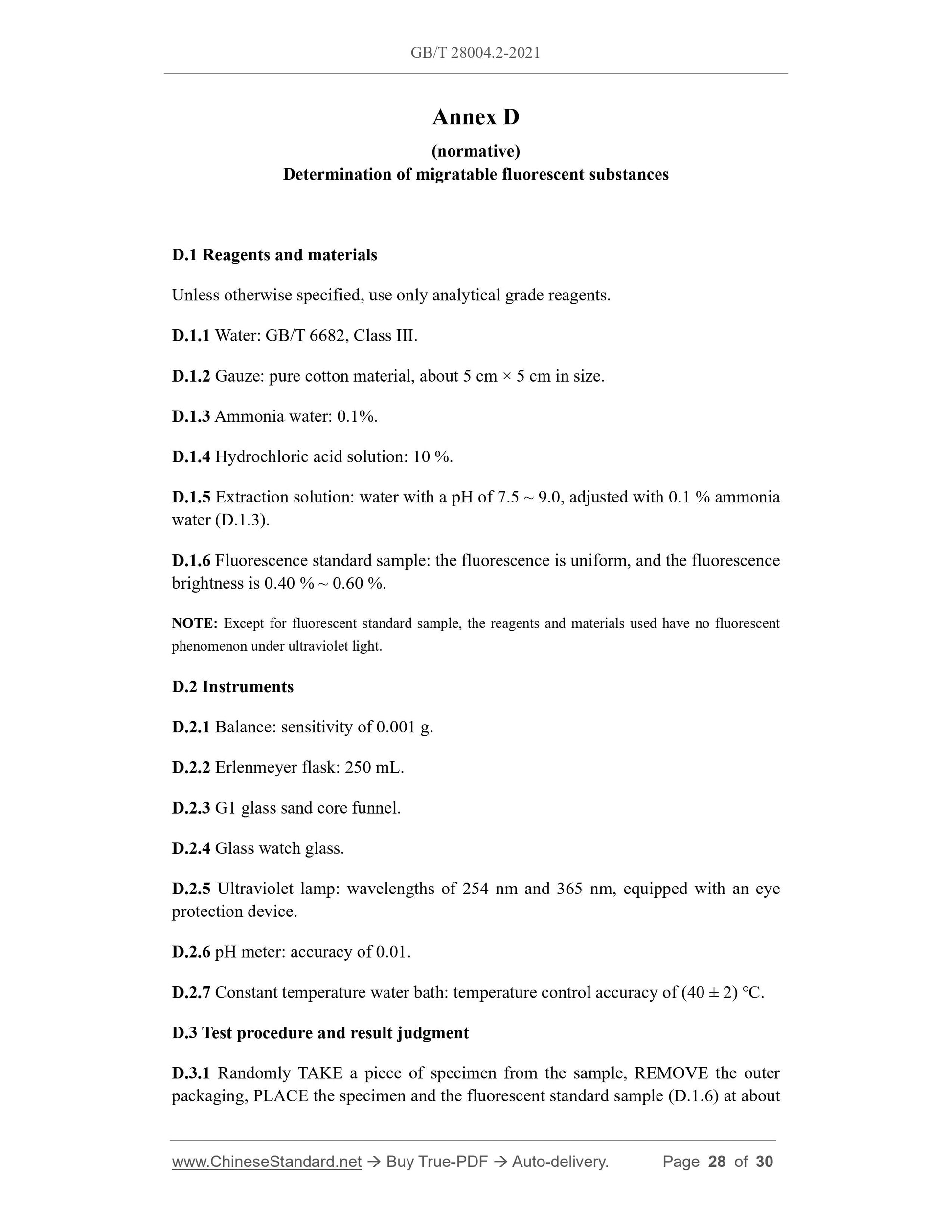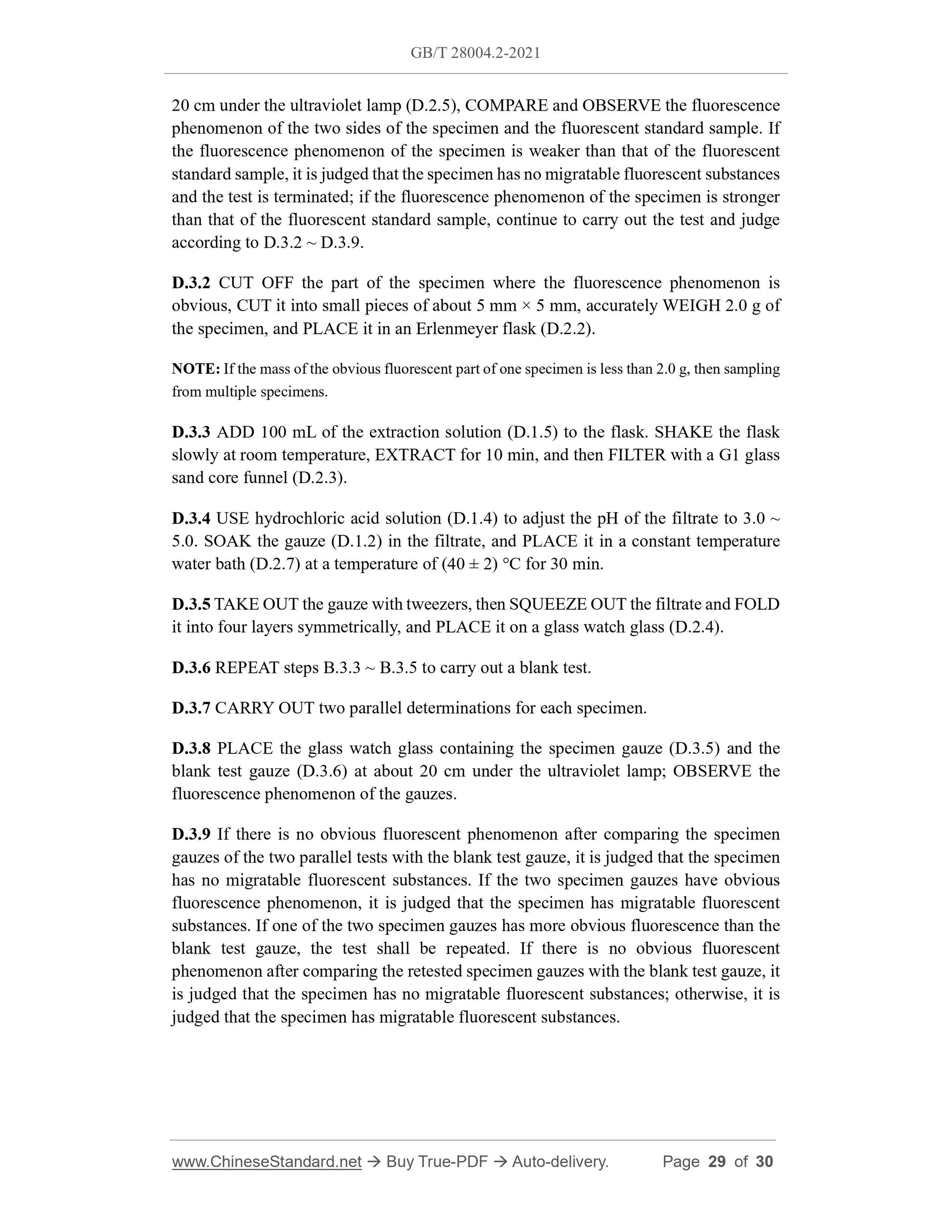1
/
of
12
www.ChineseStandard.us -- Field Test Asia Pte. Ltd.
GB/T 28004.2-2021 English PDF (GB/T28004.2-2021)
GB/T 28004.2-2021 English PDF (GB/T28004.2-2021)
Regular price
$350.00
Regular price
Sale price
$350.00
Unit price
/
per
Shipping calculated at checkout.
Couldn't load pickup availability
GB/T 28004.2-2021: Disposable diapers - Part 2: Disposable diapers for adult
Delivery: 9 seconds. Download (and Email) true-PDF + Invoice.Get Quotation: Click GB/T 28004.2-2021 (Self-service in 1-minute)
Newer / historical versions: GB/T 28004.2-2021
Preview True-PDF
Scope
This Part of GB/T 28004 specifies the product classification, technical requirements,test methods, inspection rules and labelling, packaging, transportation and storage of
diapers, diaper pads and changing pads (nursing pads) for adult.
This Part applies to disposable diapers, diaper pads and changing pads (nursing pads)
for adult, which are made of outer covering materials, built-in absorbent layers, leak-
proof bottom films, etc.
Basic Data
| Standard ID | GB/T 28004.2-2021 (GB/T28004.2-2021) |
| Description (Translated English) | Disposable diapers - Part 2: Disposable diapers for adult |
| Sector / Industry | National Standard (Recommended) |
| Classification of Chinese Standard | Y39 |
| Word Count Estimation | 22,213 |
| Issuing agency(ies) | State Administration for Market Regulation, China National Standardization Administration |
Share
